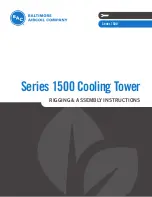
13
English
3. Installation Process
3-1.
Embedding the Tubing and Wiring
G
Do not connect tubes to locations that are embedded.
G
Be sure to bind refrigerant tubing and inter-unit cables
together with vinyl tape.
G
The power cable must be obtained on-site.
(ø3.5: Less than 26 m)
G
Be sure to apply the provided labels to both ends of
the inter-unit cables to prevent miswiring.
G
Securely seal the end of embedded tubing with vinyl
tape in order to prevent dirt or moisture entry.
G
In order to prevent insulation breakdown and ground
faults, do not allow the wire ends to contact rainwater,
or be subject to dew condensation.
Deburring
Before
After
Fig. 8
3-3. Use of the Flaring Method
Many of the conventional split system air conditioners
employ the flaring method to connect refrigerant tubes
which run between indoor and outdoor units. In this
method, the copper tubes are flared at each end and
connected with flare nuts.
3-4. Flaring Procedure with a Flare Tool
(1) Cut the copper tube to the required length with a
tube cutter. It is recommended to cut approx. 30 –
50 cm longer than the tubing length you estimate.
(2) Remove burrs at the end of the copper tube with a
tube reamer or file. This process is important and
should be done carefully to make a good flare.
(Fig. 8)
3-2.
Drain Cap and Drain Elbow
First refer to Section 2. Installation Site Selection.
The drain hole at the bottom of the outdoor unit was not
plugged at the time of factory shipment. If necessary,
plug the drain hole with the accessory drain cap or
mount the accessory drain elbow before installing the
outdoor unit. (Fig. 7)
NOTE
Accessory
drain cap
Accessory
drain cap
Accessory
drain elbow
Outdoor unit
Fig. 7
CAUTION
When installing in a cold
area where drainage water
may freeze, do not attach the
provided drain cap or drain
elbow to the bottom plate of
the unit.
08-253 CMRV3146EH_OU EN 10/14/08 2:39 PM Page 13
















































